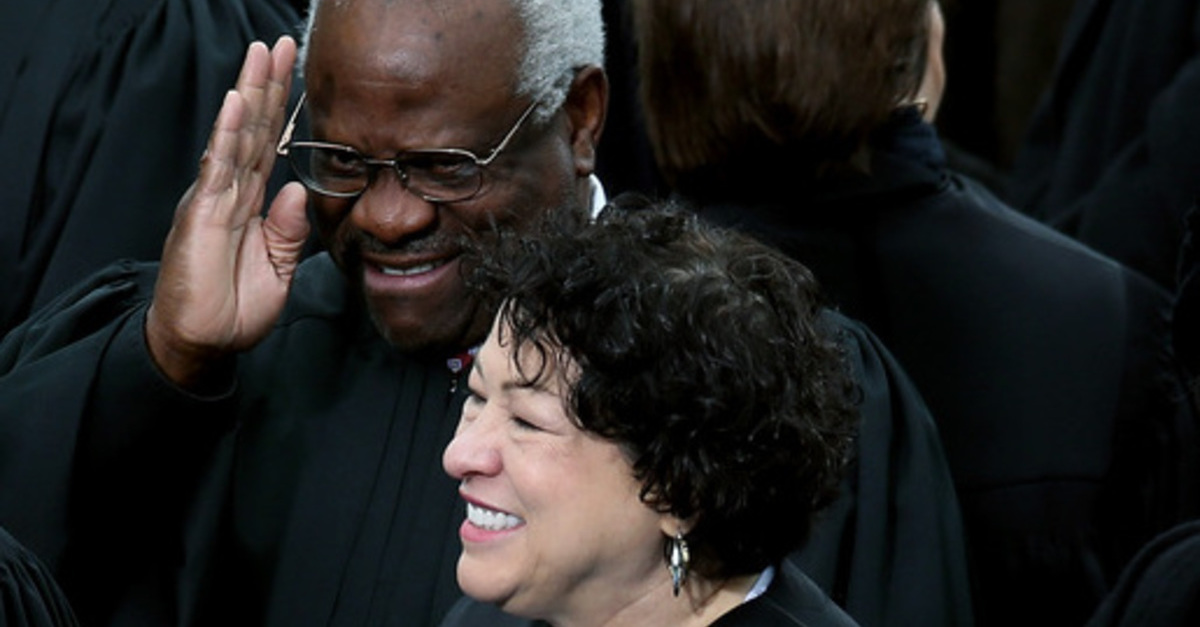
In a significant 7-2 ruling on Thursday, the U.S. Supreme Court held that immigrants to this country who seek asylum cannot ask federal courts to review fast-tracked deportation orders. Justice Sonia Sotomayor responded with a fierce dissent, chastising the majority for spectacularly missing the point.
“Today’s decision handcuffs the Judiciary’s ability to perform its constitutional duty to safeguard individual liberty and dismantles a critical component of the separation of powers,” Sotomayor wrote.
The case is that of Vijayakumar Thuraissigiam, an immigrant who is a member of the ethnic minority Tamil population in Sri Lanka. Thuraissigiam was apprehended in the U.S. and sought asylum on the basis that he feared persecution in his native country.
Under expedited removal procedures, if an asylum officer determined that Thuraissigiam’s fear was credible, Thuraissigiam would have been entitled to a full hearing. However, in this case, the opposite happened, and his matter was only given a quick review by an immigration judge. Thuraissigiam filed a petition for habeas corpus in federal court, claiming among other things that his due process rights had been violated.
The case, styled at the high court as Department of Homeland Security v. Thuraissigiam, assessed the legality of the 1996 Congressionally-created “expedited removal process.” When removal is “expedited,” it means that one front-line immigration officer can unilaterally decide to deport some immigrants without a full hearing.
Justice Clarence Thomas penned a 10-page concurrence which embarked on one of his beloved history lessons. As usual, it was heavy on olde England. Explaining his reasoning for the finding that expedited removal does not constitute an illegal suspension of habeas corpus, Thomas ushered his readers through habeas corpus under the Magna Carta and the writings of Sir Edward Coke. Alexander Hamilton wrote about habeas corpus in Federalists 83 and 84, and the Founding Fathers were fine with detaining people who were “suspect.” Based on the history, says Thomas, the statute in question “bears little resemblance to a suspension as that term was understood at the founding.” Therefore, all is good with deporting Vijayakumar Thuraissigiam without a full hearing.
Justice Sotomayor offered something of a history lesson of her own. She began by hitting, head-on, the reliance upon founding-era logic with regard to immigration decisions:
To start, the Court recognizes the pitfalls of relying on pre-1789 cases to establish principles relevant to immigration and asylum: ‘At the time, England had nothing like modern immigration restrictions.’ Ante, at 18–19 (“As late as 1816, the word ‘deportation’ apparently ‘was not to be found in any English dictionary’’).
She went on to point out the impossibility of bringing forth precedent on immigration issues that are coincident in time with those on the creation of habeas corpus:
The Court nevertheless seems to require respondent to engage in an exercise in futility. It demands that respondent unearth cases predating comprehensive federal immigration regulation showing that noncitizens obtained release from federal custody onto national soil.
“The United States,” Sotomayor continued, lacked a comprehensive asylum regime until the latter half of the 20th century.” That might explain why there aren’t any older cases that are directly on point with this one. Trying to equate Thuraissigiam’s immigration-based habeas corpus claim with centuries-old precedent is, as Sotomayor put it, “out of step” with the Court’s usual practice.
Sotomayor let her frustration with the majority’s logic be known, writing that despite the court’s “professed keen interest in precedent,” it discounted cases “from around the founding onward” that did apply “to noncitizens who were detained, and wanted to remain, including those who were prevented from entering the United States at all.”
Justice Sotomayor followed up her reasoning with everything from specific examples from slave times to the English Habeas Corpus Act of 1679. She ended by slamming the majority for “ignoring a plethora of common-law immigration cases from a time of relatively open borders, and mischaracterizing the most relevant precedents from this Court.”
Sotomayor wrote that the Court justified its decision by “pointing to perceived vulnerabilities and abuses in the asylum system.” Yet the Court, she complained, was unwilling to allow deportees to address those problems in the courts.
[image via John Moore/Getty Images]